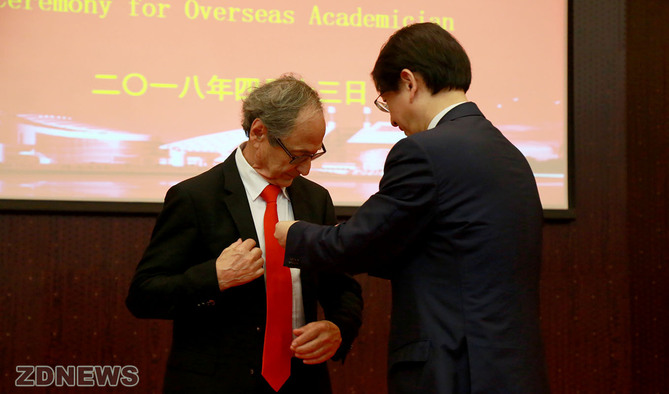Nobel laureate Michael Levitt joins ZJU with an honorary professorship
On the afternoon of April 13, Prof. Michael Levitt, the 2013 Nobel Prize winner in Chemistry, joined the ZJU's Center for Quantitative Biology as an honorary professor.
President WU Zhaohui delivered a welcome address at the ceremony. Also present at the ceremony was Vice President ZHANG Hongjian.

Michael Levitt is one of the first researchers to conduct molecular dynamics simulations of DNA and proteins. He is a biophysicist and a professor of structural biology at Stanford University. He was elected an EMBO Member in 1983, a Fellow of the Royal Society (FRS) in 2001, and a Member of the National Academy of Sciences in 2002. He received the 2013 Nobel Prize in Chemistry, together with Martin Karplus and Arieh Warshel, for “the development of multi-scale models for complex chemical systems”.
WU Zhaohui expressed that the joining of Michael Levitt is one big step in the construction of the faculty team and will definitely promote the expeditious development of the relevant discipline, thereby helping build the Center for Quantitative Biology into a world-class research institution. He expressed his sincere hope that the university will introduce more eminent scholars, leading researchers and top-notch academic teams, encourage faculty members to go global, co-establish a collaborative and innovative pattern aligned with an innovation-driven university and create a friendly environment for the development of various talents.
Michael Levitt was in full anticipation of his work at ZJU. “I enjoy working and exploring questions in the fields of physics, chemistry and biology with scholars from across the world. Mankind is currently confronted with an extremely harsh challenge. I hope to crack these hard nuts with my colleagues from Zhejiang University,” said Michael Levitt.

After the ceremony, Michael Levitt delivered a speech regarding the past, present and future of multi-scale models for computational biology. He used vivid examples and images to elaborate on the crucial role of computer technology in simulations in biochemistry. He also encouraged students to be passionate, perseverant and cooperative so as to realize their scientific dream.